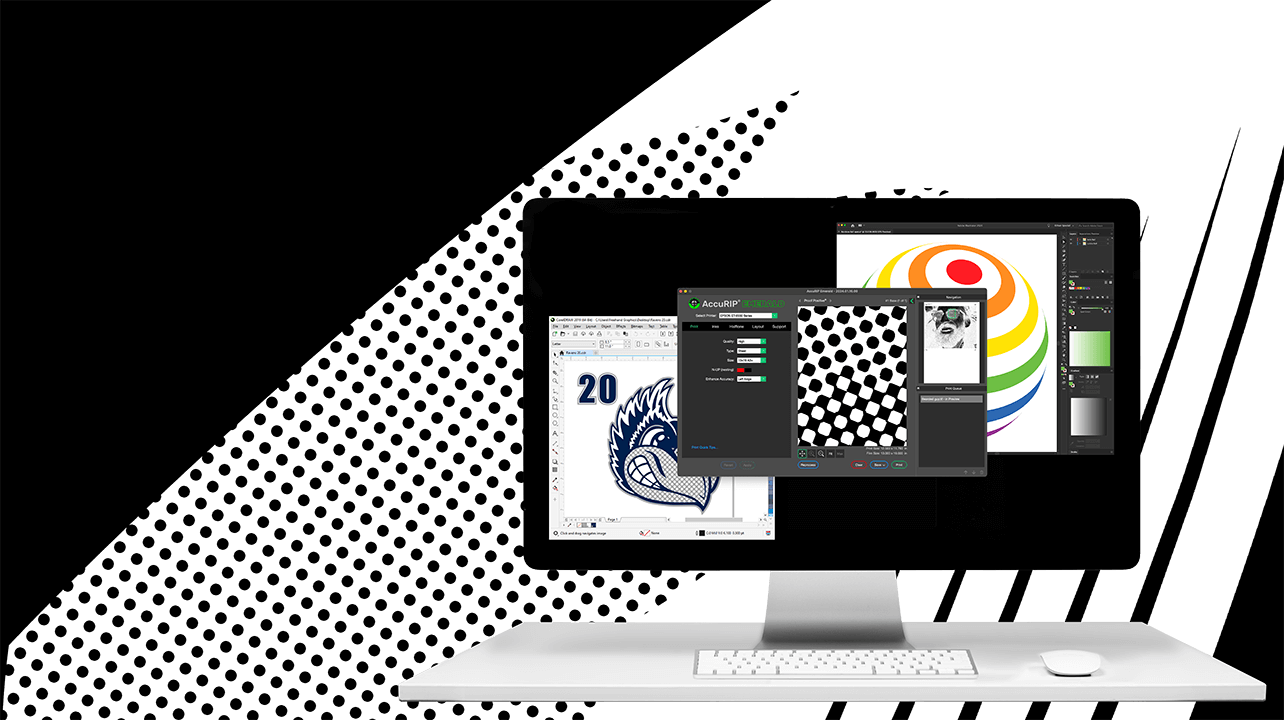What is RIP Software?
What is RIP software? RIP software (short for Raster Image Processing) handle the translation of computer language from Postscript (graphics program language) to Raster (printer language) to produce printed separations used to expose screens for the purpose of screen printing. (Kornit) In simple terms, RIP printing translates graphics files to a language a printer can understand.
Inkjet printers are “non postscript” devices meaning they do not understand the print language of programs such as Adobe Illustrator or CorelDRAW to name just a few. Postscript is necessary to create the design, apply effects and more. Postscript also controls the colors, separations and print options but you will need a translator software (RIP) to convert postscript to a language the printer can understand. That is why we use RIP software.
Running a business without RIP software is not a smart practice. At less than a dollar a day to operate what it delivers in invaluable.

There are three stages of RIP printing (Wikipedia).
- Interpretation
During this stage, PDLs, or supported page description languages, are translated into a private internal representation of each page.
- Rendering
The private internal representation is then turned into a bitmap. Rendering is commonly done at the same time as the Interpretation stage.
- Screening
At this stage, the image is created into a halftone, or pattern of dots. There are 2 screening methods: Amplitude modulation (AM) screening and stochastic or frequency modulation screening (FM).
Without RIP software, by using just the manufacturer inkjet printer driver none of the advanced postscript options in a graphics program are available (greyed out). It is when you choose a postscript RIP printer driver such as AccuRIP® that these options become available. Quality remains high while printing is swift. Click, print, done.
It would be enough if AccuRIP simply handled the postscript translations but it does more. It also controls ink flow, density, printer resolution, halftone settings, dot gain, and more. All critical abilities when printing separations onto film used to expose screens.
Back in 1980’s Postscript changed the graphics world for the better, giving birth to the desktop publishing. It was just a few years later that RIP software came onto the scene and never left. As valuable a computer workflow player today as it was then.




